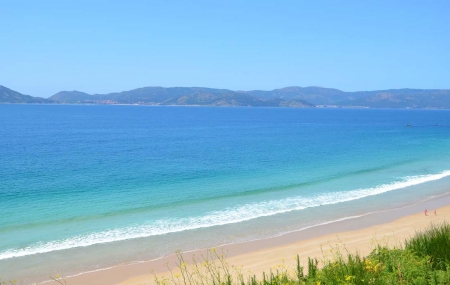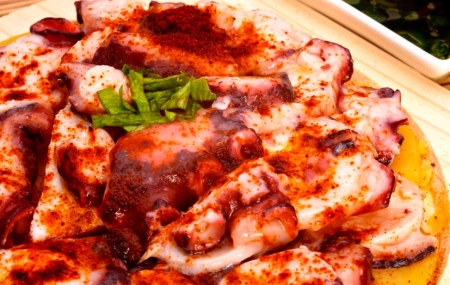Santiago de Compostela, the Star of Galicia
You can be happy here even in the rain. Santiago de Compostela is our favourite small city in the whole of Spain.
Famed as a pilgrimage destination, it’s also an upbeat university town, where local, pilgrim, student and tourist come together to mingle in well-kept streets, squares and parks.
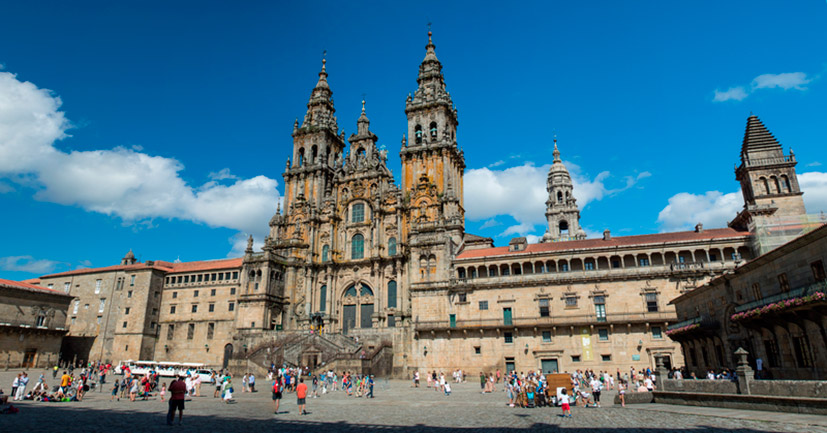
Every year thousands of people, irrespective of their faith, walk the Camino de Santiago, the pilgrims’ ways from Spain’s south, Portugal, and as far afield as France, all of which converge on Santiago de Compostela and its towering cathedral in the vast Plaza de Obradoiro square, where a reliquary reputedly holds the bones of St James the Apostle.
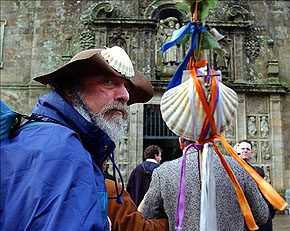
Lily and gold! Pilgrim on a plain among chestnut blossoms (Antonio Machado)".
The old quarter presided over by the cathedral is an evocative meeting place for monasteries, convents, the bishop’s palace, art galleries, museums, cloisters, fountains, university buildings, enticing delicatessen, inns and taverns.
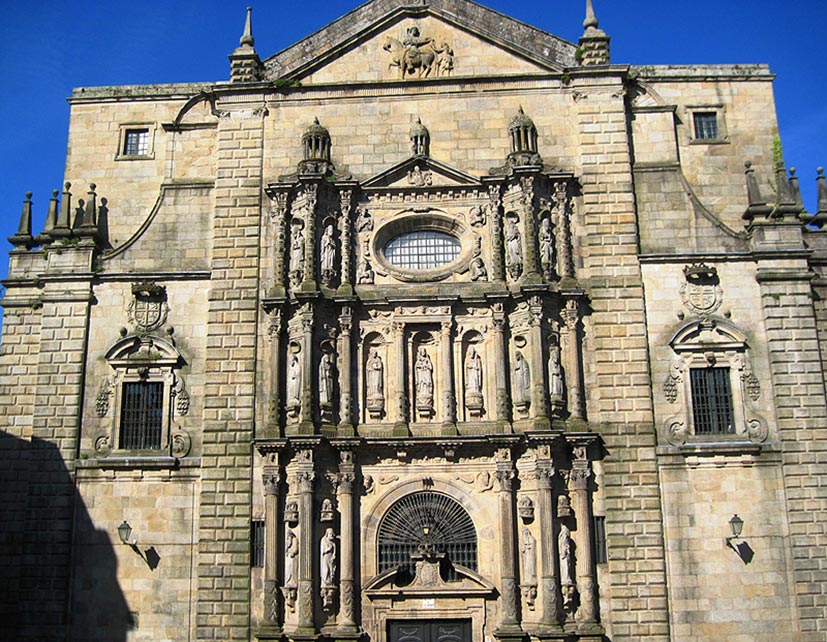
Often hidden down quiet alleyways and set out with terraces, all constructed in the dignified blocks of grey granite that is so typically of Galicia. A uniquely gratifying atmosphere reigns in Santiago de Compostela.
Conservative by Catholic tradition, it’s nonetheless distinctively buoyant. A sense of history is sustained by the council’s laudable decision to keep traffic out of the old town, while a youthful cheeriness amongst the student population (themselves a stalwartly traditionalist lot) is joined by festive pilgrims, arriving via the ancient streets with their backpacks and walking staffs.
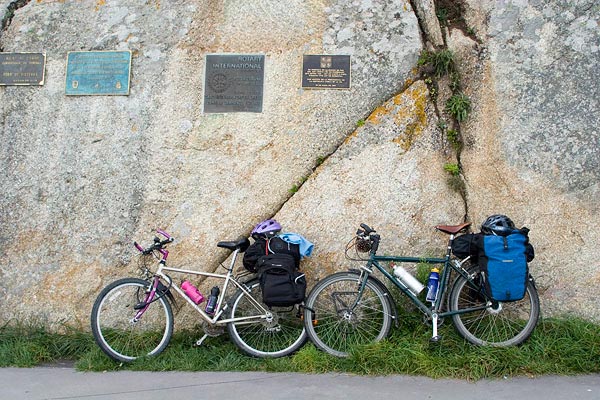
As they pass through archways and down broad flights of steps, there is often a harpist or Galician gaita (bagpipes), to serenade them, and church bells resounding in dignified squares.
The restorative spirit of the place is best enjoyed in the tavern bars, where tapas are often given free by well-trained waiting staff, and in small restaurants, where seafood is one of the highlights.
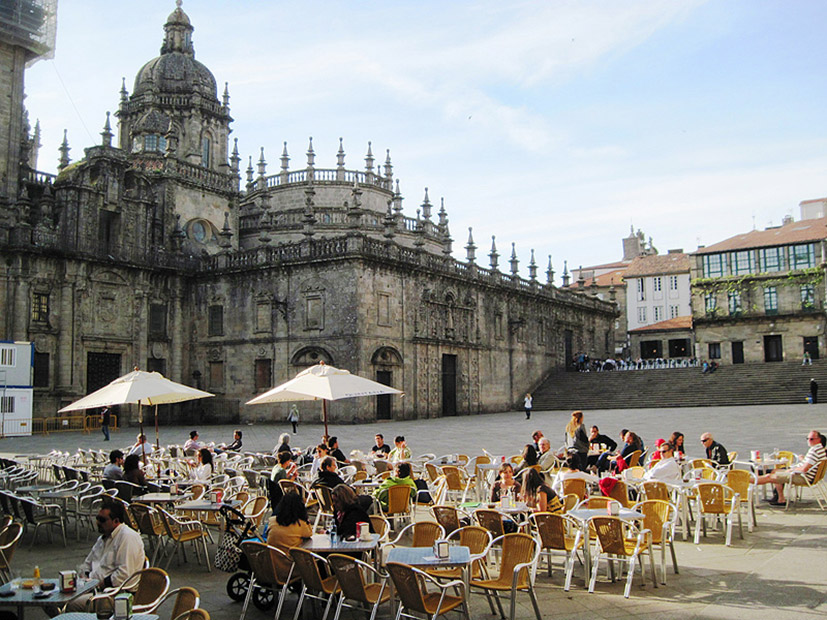
If you've never tried octopus, now’s the time to try it: pulpo a feira is tender, lightly flavoured by the sea, sprinkled with paprika, rock salt and olive oil, and served with the Galician cachelo potato.
As in any good Celtic land the people here are fine connoisseurs of the potato (indeed, the Kennebec variety bears a Protected Designation of Origin pedigree in the EU).
For dessert, you may wish to sample the local tarta de Santiago, an almond cake whose sugar-dusted top is printed with cross of St James.
If you’re shopping for souvenirs, then look into shop windows on Vilar, Nova and Fonseca streets for traditional silverware and jet trinkets, or the flea market, also on Nova.
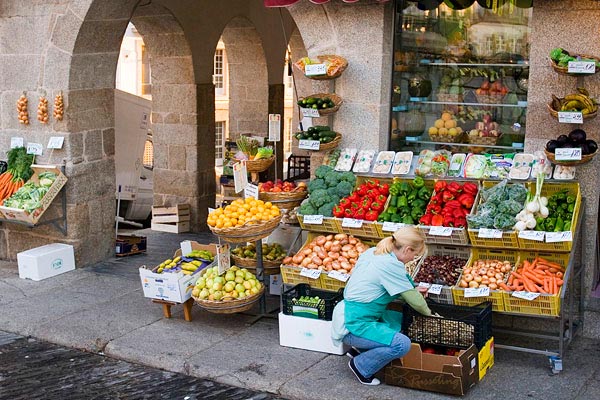
On Saturday mornings an antiques market is held in the columned parade of the post office building near Fonseca. For fashion and footware, hit the Ensanche area.
Once you’re there, you’ll soon see that you’re spoilt for choice when it comes to bars, cafés and restaurants, although if you wish we’ll send you our restaurant and tapas guide, which we think you’ll find pretty exhaustive.

Santiago also has its modern side. The place for contemporary art is the CGAC centre designed by Alvaro Siza, while the most striking piece of modern architecture has to be the rough-hewn grey-white cube of the Music School by Anton Garcia Abril.
And when you fancy somewhere quiet, or a place for the children, try one Santiago’s parks. We suggest Monte da Almáciga Park for its central location, playground, view and drinking fountains. Alameda Park is another attractive option.
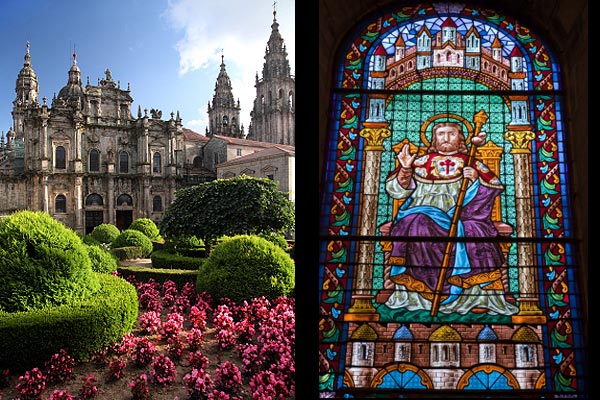
Finding your way around
The old town has a medieval feel and the stone-flagged streets, alleys, squares and cloistered walkways are a delight to explore on foot. If you arrive by car, we suggest the secure car park on San Clemente street.
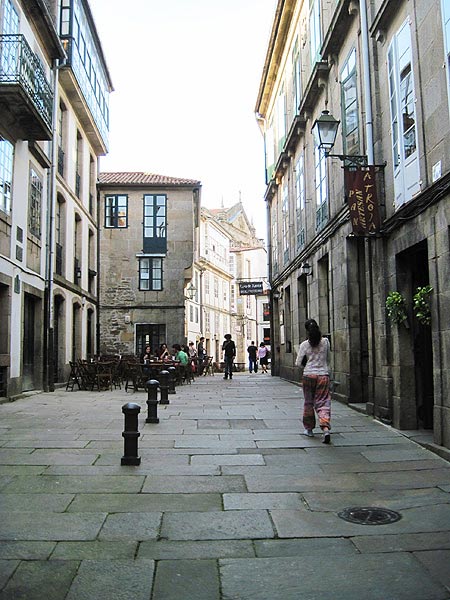
It’s easy to find, close to the pretty Alameda Park and a stone’s throw from the cathedral. Drive into the city centre on the AC-404 and turn left immediately after passing the Alameda Park to the left. Take the next right, signposted for Parking San Clemente, and follow the road round to the underground car park.
The town is well-signposted and there are tourist offices with free maps. The main Tourist Office is on Rúa de Vilar street. They run guided tours in English of the old town, the enclosed convents, churches, artists’ workshops and an enticing gastronomic tour. Our tip, however, is their excellent and easy-to-use audio guides which make for a very comfortable way to discover the city, its museums and monuments. They come in Spanish, English, German, Italian, French and Portuguese.
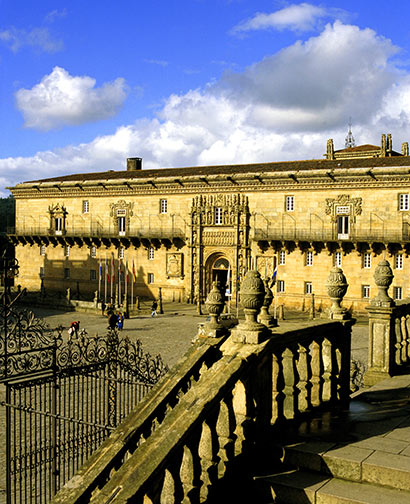
You can book all the guided tours on the santiagoturismo.com website, which is very informative and user-friendly. But if you prefer to create your own route, here is our selection of Santiago highlights.
Selection of Santiago highlights
• The splendid cathedral: With the reliquary of St James.
• The squares: Obradoiro, Quintana, Inmaculada and Praterías.
• San Martín Pinario Monastery: The magnificent façade announces 20,000 m² of baroque architecture. Plaza de la Inmaculada, 5. Entrance: 2.50 €. Tuesday-Sunday 11am -1.30pm, 4pm-8.30pm. Closed Mondays. Often houses exhibitions.
• Pazo de Bendaña: An 18th century baroque palace with a statue of Hercules holding up the world. Today it houses the Granell Foundation and Museum. Praza do Toural square. Mon – Sat 11 am-2 pm., 4-9 pm; Sunday, 11 am-2 pm (closed Monday).
• CGAC (Galician Centre of Contemporary Art): Rúa de Ramón del Valle-Inclán, 5. Summer: Tuesday-Sunday: 11 am to 8 pm. Winter: Tuesday-Sunday: 12 noon to 9 pm. Closed on Mondays.
• Museo do Pobo Galego: (Museum of the Galician People). Housed in a former convent. Rúa de Ramón del Valle-Inclán, 3. Tue-Sat: 10am-2pm, 4pm-8pm. Sundays and holidays: 11am-2pm. Mon: closed.
• Museo das Peregrinacións: (Pilgrimage Museum) Praza de San Miguel dos Agros, 2-4. Tuesday-Friday: 10 am to 8 pm. Saturday: 10.30 am to 1.30 pm, 5 pm to 8 pm. Sunday: 10:30 am to 1:30 pm. Closed on Mondays, January 1st, January 6th, May 1st, July 25th, December 24th-25th-31th.
• Monte da Almáciga Park: Accessed from another park, San Caetano, close to the bus station in the town centre. It slopes up to the city’s highest point with a good view. Lawns, children’s playground, benches, drinking fountains.
• Alameda Park: By the San Clemente car park (see above)
• Escola de Altos Estudos Musicais: (Music School), Rua das Salvadas. View outside only: not open to the public.
• Guided tours: In English and audio guides in a variety of languages from Santiago Official Tourist Office (Main Office at Rúa do Vilar, 63).
• Mercado de Abastos: Impressive covered provisions market, located 2 minutes south from the cathedral. Interesting experience and the perfect opportunity to buy fresh produce to take back to your holiday home.
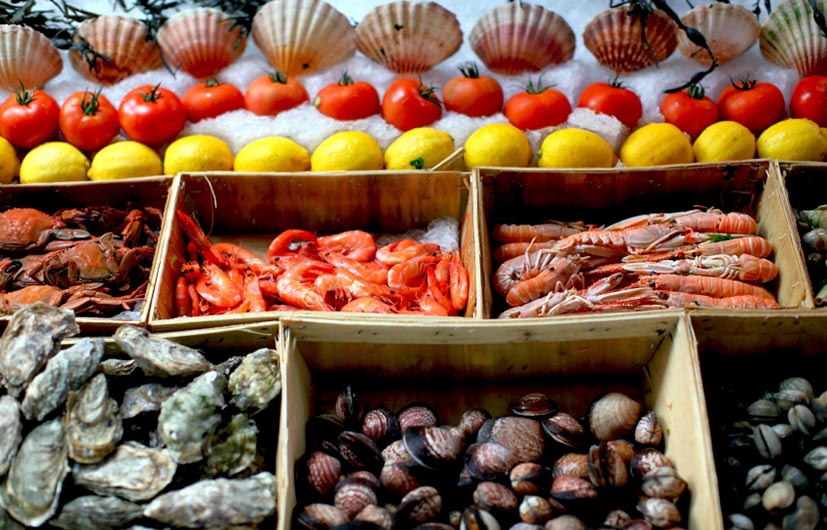
Rural Santiago
It is one of Santiago's main attractions to be set at the heart of green, Celtic Galicia, where some lovely villas and cottages provide a holiday base. There are pretty walks and a variety of leisure and adventure activities on offer in the Santiago area.
Watersports such as rafting and canoes on Rivers Tambre, Miño and Ulla are popular, as are mountain biking routes, horseriding, go-karts, quads, canyoning and paragliding.
As one of the holiday documents, we send our clients a detailed local information file for rural Santiago.
It explains where to book these activities as well as giving ideas for some great days out hiking, at the beach, visiting wine bodegas or exploring the south.




